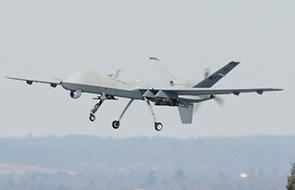
Credit: USAF
A Pentagon investigation into the Aug. 29 drone strike in Kabul that killed 10 Afghan civilians calls for changes to how future airstrikes are handled but says those involved in conducting the strike did not violate any laws of war and simply made a mistake. The MQ-9 strike targeted what U.S...
Subscription Required
This content requires a subscription to one of the Aviation Week Intelligence Network (AWIN) bundles.
Schedule a demo today to find out how you can access this content and similar content related to your area of the global aviation industry.
Already an AWIN subscriber? Login
Did you know? Aviation Week has won top honors multiple times in the Jesse H. Neal National Business Journalism Awards, the business-to-business media equivalent of the Pulitzer Prizes.
